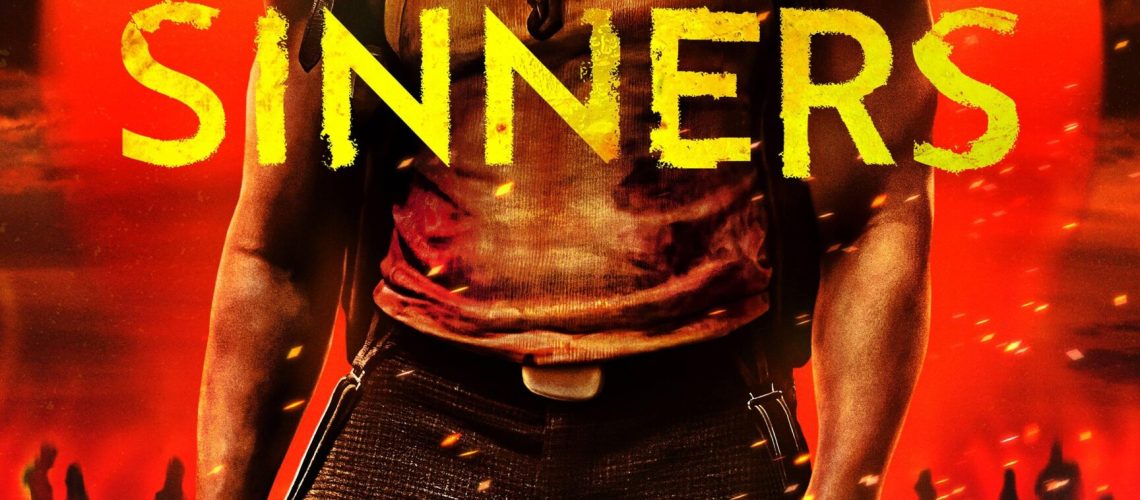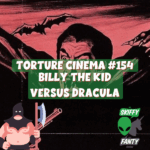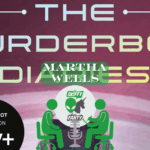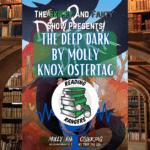SINNERS (2025)
Directed by Ryan Coogler
Written by Ryan Coogler
Cinematography by Autumn Durald Arkapaw
Starring:
Michael B Jordan
Miles Caton
Hailee Stenfeld
Jack O Connell
Wunmi Mosaku
Jamie Lawson
Omar Miller
Delroy Lindo
Trish: The first trailer that I saw last year for “Sinners” was a bit cryptic, but I was excited because it reminded me a bit of a great Actual Play campaign I’d seen on Twitch, based on the Harlem Unbound module for Call of Cthulhu, called Harlem Hellfighters never die, in which Black pilots fresh back from the Great War found that there were even greater horrors lurking back home. Here, the trailer showed some Black men returning to the rural South and facing some kind of horror. And the movie was written and directed by Ryan Coogler, who directed Black Panther and other fine films, and starring Michael B. Jordan, a very fine actor, and numerous other notables! So I was all in for the movie, months ago, tried to avoid further spoilers, and saw it the first chance I got, Saturday of opening weekend. It wasn’t quite what I expected, but it was really great, and I do recommend seeing it in a theater if possible. The plot was gripping, the monsters had some seductive arguments, and the blues music running throughout the movie, and providing and enhancing major plot points, was strong, soaring, pulse-pounding and moving.
Paul: For me, this was an unlikely movie to get me to watch. A horror movie, and one that is strongly focused and grounded and centered on music is not something that I normally would have contemplated going to see in the theater, or even renting a stream of. It is completely outside my normal genres on those two axes.
I am very glad, however, that I was persuaded to do so.
The movie is a slow burn in terms of genre. We get a sense at the beginning, given the wrapping story, that something very bad has happened to Sammie (Miles Caton), driving up to his father’s church wearing bloody rags, clutching a remnant broken neck of a guitar and his preacher father exhorting him to put it down and come to the Lord. Something terrible has happened, but what? The story then jumps back twenty-four hours, and shows us this one-day story. Sammie is a sharecropper on a cotton plantation in the deep south, in 1932, in the Mississippi Delta. He finishes his quota as fast as he is able, so that he can play his beloved music, to the chagrin of his father.
Trish: Pastors condemning jazz and blues music as a tool of the Devil is an old trope, of course, about as old as those musical forms themselves. Many a jazz/blues musician has roots in Gospel music, because that’s where a poor Black person would have any opportunity for musical training in rural Mississippi, and many of them have been condemned for turning to “the devil’s music” associated with drinking, dancing, lust, fornication, other sins, and even just staying up late Saturday and missing church on Sunday. Moreover,, Delta blues musician Tommy Johnson claimed to have sold his soul to the Devil in exchange for mastery of the guitar. (Evolving musical forms of rock and roll and their descendants are similarly opposed by fundamentalists.) So the prologue felt very familiar to me, didn’t require any explanation, and instantly provided some worldbuilding references for people who already knew the context. In this case, the preacher was certainly vindicated in his fears for his son, although the danger turned out to be as much on account of Sammie’s mortal peril as for the perils to his soul.
Paul: When Sammie’s cousins Smoke and Stack, identical twins ably played by Michael B. Jordan, show up, the plot kicks off. War veterans, former violent enforcers of Al Capone in Chicago, they’ve come back to create a Juke Joint in the Delta, a place for their people to go. So, much of the first act of the movie is Sammie going along with the brothers as they assemble the people they need to make it happen. We get introductions to all the characters that will be central to the drama. Smoke’s estranged wife Annie. Local Chinese shopkeepers and cooks Grace and Bo. Singer Pearline. Pianist Delta Slim, and others, including Stack’s ex-girlfriend Mary (Hailee Stenfeld), who is of mixed race but usually passing for white. The group congregates at a local abandoned sawmill which the twins have bought, with cash, from a local KKK honcho. Tonight, there will be food, drink, and music.
MAJOR SPOILERS FOLLOW
Paul: Up to this point, this movie is entirely a period piece, soaked in the music of the Blues and of the culture and place of the Mississippi Delta in the 1930s. But the movie starts its slow turn when a mysterious stranger arrives at a farm, claiming that Choctaws were chasing him, and asking to be let in. The couple who own the farm do so. The Native Americans arrive, warn the couple not to let such a dangerous individual as whom they are hunting in, and leave. Meantime, the vampire, for that is what he is, soon turns the couple and the genre part of the movie is off and running,
Until the vampires decide to descend on the Juke Joint, the movie shows us our protagonists at their happiest, partying, drinking, eating, having sex, and playing music. One of the more fantastical and mystical and best scenes of the movie for me occurs here. Sammie is invited to play and give his real debut to the audience. We had gotten a voiceover intimation that people who can truly play music can transcend space and time, and this is what actually occurs in this set piece. As the audience dances and sways and reacts to the beautiful and heartfelt music, we see images, flashes of others in the audience, ranging from Africans and Native Americans in the far past, to futuristic costumed individuals beyond even our era of the 2020s. For one sequence, space and time are transcended by the power of Sammie’s music.This sequence is wonderfully filmed too, as well as the rest of the film, the cinematography, the variety of shots, and imagery are fantastic. The movie avoids the all too common muddy darkness that we see in films today. Even in the dark, we can see what we are meant to see. More cinematographers should take a page or two from Arkapaw.
There is true magic and power in music, and this music in particular. But that power, that music, can also call darkness and evil, the voiceover has already told us, and so the vampires, lured by the music, come to the Juke Joint. And it is then that the film shifts gears to a vampire survival movie. And yet, even through that, the movie does not forget the first half of the movie. The head vampire Remmick and his minions play music, too, and there is an effective and frightening use of Irish and Scots Irish Appalachian sounding music done by Remmick and his minions that is a fascinating counterpoint to the Blues music of Sammie and his friends.
Trish: This scene evoked complex emotions for me. Three white people had tried to enter the Juke Joint earlier in the night, trying unsuccessfully to prove themselves fellow musicians by playing “Pick Poor Robin Clean” – which was originally recorded in 1930 by Geeshie Wiley, a Black country blues musician, but they managed to make it sound like an Appalachian folk tune, not suited to the Juke Joint at all. Later, after the trio was revealed as vampires, they turned many of the Black patrons into vampires and led them in Irish/Appalachian music and dance. The primary vampire, Remmick (Jack O’Connell), orated and even preached about how as vampires, they knew each other’s thoughts and hearts and had become one family, but it also felt very much like one white person appropriating an entire community of Black people to bolster his own narrative.
Paul: However,, the monsters have a point. The vampires point out quite seductively, as they try to use persuasion to get inside, that Smoke and Stack’s project is doomed from the start, that the local KKK and white populace will not and cannot allow them to succeed. So why not join a different, more powerful minority, like the vampires? Race and race relations are a central tentpole of this movie and the vampire’s seductive arguments are just part and parcel of that. But persuasion soon turns to outright assault, and the movie shifts once again to sharp shocks of violence and desperate combat. The protagonists become genre-savvy very quickly (pivoting to identifying the monsters as European-style vampires from an earlier assumption that the assailants might be a more local type of haints) and the movie plays with that, even as the assault is on.
Trish: For me, this immediately brought comparisons with “From Dusk Until Dawn” (1996), the movie about bank robbers and their hostages winding up at a truck stop nightclub, where (MAJOR SPOILERS FOR A 29-YEAR OLD MOVIE) the singer, musicians, and other people turn out to be vampires luring in an audience to prey upon. In that movie, most of the victims are far less sympathetic, and although the singer is incredibly physically seductive, the vampires just desire blood and slaughter, not any kind of sociopolitical conversion. There are some great scenes in that movie, but given the choice of what to rewatch, it would be “Sinners” for me, hands down.
Paul: It’s a vampire movie, and so the body count is high, and many of our friends fall. I am going to try and avoid some of the surprises (and the movie itself plays with withholding information from the audience), but we eventually get to see how and why Sammie drives back to his father’s church on an early Sunday morning with the broken guitar neck in hand and wearing bloody rags.. There is a mid-credits scene that finishes Sammie’s story in a very satisfactory way, and then a credit cookie at the end for music lovers. Stay for both to get the full experience.
“Sinners” is a movie that I would strongly consider adding to my Blu-Ray collection. I may not be that much of a fan of vampire-style horror (give me cosmic horror any day), and my knowledge of music is scattershot at best, but my tin ear enjoyed and felt and was moved by the use and application of music in the movie. It’s a film full of immersive period detail, grounded in its POC cast and their world and perspectives, and the movie shifts its gears effortlessly and smoothly. We get a range of characters: personalities, ages, and women’s body types shown in a positive and entrancing light. More directly and immediately, “Sinners” is a movie worth seeing in the theater if you go to theaters in this day and age. It’s an experience not to be missed.







